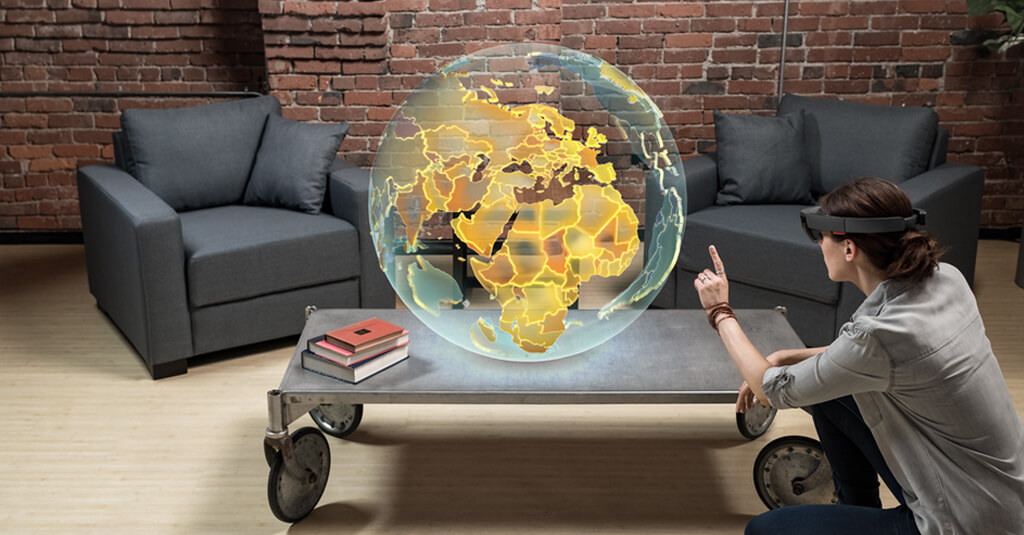Improving workforce productivity has always been at the forefront for most of the organizations. Organizations believe in providing customized experiential learning experiences to cater to the needs of diversified audience. Today, Augmented Reality (AR) is poised to leave a huge impact on workplace learning, with the potential to boost employee efficiency and workplace productivity. As per the U.S. Bureau of Labor Statistics, though productivity increased to 2.7% annually from 2001 to 2007, the growth rate was only 1.1% from 2008 to 2016. AR has the potential to improve the results by accelerating employees’ working efficacy and accuracy. Test programs where employees use AR headsets to access instructions will reflect productivity gains between 20%-35%.
Gone are the days when AR was a buzz following on the heels of Virtual Reality (VR). In fact, as per studies conducted by IDC forecast, revenues generated through both these technologies will increase to $9.1 billion this year. Also, enterprises expect VR/AR sales to rise by 95% in 2018 to reach $17.8 billion. [Source: https://www.idc.com/getdoc.jsp?containerId=prUS43248817]. Enterprises are now understanding the real value in AR and leveraging its capabilities to share more knowledge to the modern workforce. They are thinking about the trends that are driving the scope of AR across diverse industry domains. Few of these are outlined here:
- AR will eclipse VRConstruction companies today are investing huge amounts in AR hardware, software and other tools. For instance, workers in a construction company can learn to repair a machinery piece by following the on-screen instructions through an immersive learning experience. When some problem occurs at the site, a second team of workers needs to be dispatched, increasing the time and money invested. So, rather than doing this, employees can work from a centralized location and monitor field situation through augmented glasses. For instance, a construction crane operator can remotely access its working without any need to go to the actual site. The highly proficient employees can transport their skills, without any hustle of leaving their desks.
- New industries adopting AR approachThe use of different equipment is getting more complex and technicians may not have the desired expertise. So, organizations are seeking for ways to put their expert knowledge into practice, whenever they need it. While the industries are getting benefits from video-based and mobile learning solutions, they pale in significance next to the scope of AR. Industries such as utilities and manufacturing, where there is a distributed network of remote workforce, AR is already paving its way. With the help of AR in e-learning, even non-technical employees can deliver interactive solutions and streamline the process for new employees.
Experiencing AR via Everyday Devices
The corporate training benefits from AR are not dependent on the next generation of hardware. For instance, ARKit is the latest hardware used into efficient AR training tools. As the use of smartphones was adopted by employees long before mobile learning apps, today millions of employees are engaged with AR on their personalized phones and tablets. The familiarity with these devices boosts learners’ understanding, engagement and retention levels during the training process. If the Pokemon Go game can go crazy, then truly AR has the potential to gain user engagement into an e-learning landscape. AR can definitely extend beyond as a tool for collaboration and interaction at the workplace.
In addition to the above, AR presents a plethora of opportunities for employees working in hazardous conditions in industries such as oil & gas, energy, pharmaceutical and more. Smart glasses are ideal for such environments where the workforce needs to undergo training based on safety instructions, remote assistance and more. AR holds the immense potential to improve human aspects of learning by imparting customized learning solutions.
Using solutions such as WorkLink, potential employees without prior coding skills can develop engaging instructions that embrace the optimum use of AR for workplace learning. New-age employees use wearables such as HoloLens headsets or smartphones to view 3D visuals within a simulated learning environment. The technology is mobile, learner-friendly and smart enough to augment custom learning programs. The perfect blend of an innovative idea and the right use of technology can transform the way organizations do business and perform activities in everyday life. In the coming time, VR and AR will likely take workplace learning approach to the next level by empowering the new-age workforce with precise information available in context, anytime and anywhere.
Suggested Further Reading: Click Here








